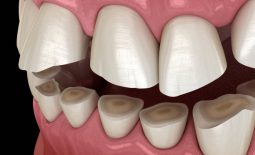Botox – a Primer
 About a year ago I began my Botox education, taking multiple classes over dozens of hours learning how and where to treat patients for wrinkles on the face. However, when I first heard about Botox I was as alarmed as I’m sure most of you were: “You’re injecting what into your face?” Still, the trend persisted, even grew, and as more research has come out as of late, the trend has absolutely exploded.
About a year ago I began my Botox education, taking multiple classes over dozens of hours learning how and where to treat patients for wrinkles on the face. However, when I first heard about Botox I was as alarmed as I’m sure most of you were: “You’re injecting what into your face?” Still, the trend persisted, even grew, and as more research has come out as of late, the trend has absolutely exploded.
Let’s start with taking a look at what exactly Botox is. Botox is the brand name for a type of botulinum toxin, the same kind that causes botulism, and is produced by a certain type of bacteria. “Toxin” is a collective term for any substance produced by an organism that can cause harm in another organism. “Venom” is an injected toxin (snakes, spiders, scorpions) while a biological “poison” is generally produced by plants and microorganisms (poison ivy, anthrax, botulism). These substances are generally used for defense or to subdue prey.
Taking a tip from the Swiss-German physician Paracelsus, considered the father of toxicology, who said “Everything is a poison, there is poison in everything. Only the dose makes a thing not a poison,” maybe these harmful substances can actually be helpful, if used in much lower doses. And that turns out to be the case. ACE inhibitors, useful in treating high blood pressure, were created after studying the venom of the Brazilian pit viper. Exenatide, a diabetes drug that lowers blood sugar and increases the body’s production of insulin, is a synthetic version of a component in the saliva of Gila monsters. And perhaps the best-known example, the discovery in 1928 of mold spores creating a toxin that killed bacteria, and the subsequent development of Penicillin. Just like fire, they can be very helpful in small doses but dangerous when not controlled. As the saying goes, fire makes a good servant but a terrible master.
Upon further consideration, perhaps a better definition of a toxin is something that alters normal physiologic function. This removes the “good” or “bad” appellation and frees us up to consider these substances for medicinal use. To alter an old cliché, perhaps “The devil is in the dose.” Properly screening patients, careful monitoring of the administration, and used in measured doses, we can hope to harness the benefits of these substances while avoiding the harms.
Botox is a paralytic; it paralyzes muscles by blocking communication from the nerve ending. In time, the nerve ending establishes a new connection and regular function returns. In the case of facial muscles, this usually takes two to six months, with three months being typical. The facial muscles, or the “muscles of facial expression,” are attached to the skin and allow us to smile, raise our eyebrows, squint, frown, and so on. It turns out that these movements, done millions of times over the course of our lives, can cause regular creases to form in the skin. These creases, or wrinkles, or “rhytids” (rye-tids) as they’re called in the medical community, are broken into two categories: dynamic and static. Dynamic rhytids are present when the muscles contract, and go away when the muscles relax. If the muscles contract enough times, over many years, these dynamic lines will become present on the skin even when the muscles are at rest, thus creating static rhytids.
As a general rule, Botox is used to treat dynamic lines. Each treatment lasts around three months, with subsequent treatments lasting longer. As for the static lines, you have two options. With Botox relaxing the very muscles causing the lines, as time goes on, and with continued treatment, those static lines will begin to fade as the skin recovers. However, if you want faster results, that is where dermal fillers comes in.
When you’re young you have a certain amount of fat under the surface of your skin to give the appearance of fullness, acting as a natural “dermal filler” and smoothing out wrinkles. As you age, the fat in the skin decreases and the wrinkles that were once filled in now become more prominent. Injectable dermal fillers are used to fill in these areas of static wrinkles to replace the fat that used to do the job. Again, these usually last about three months and can last longer with continued treatment.
While treating facial wrinkles is probably the best-known use of Botox, it turns out it wasn’t the first, nor is it the only, by a long shot. Allergan, the maker of Botox, used to make products specifically for the eyes, like contact solution and eyedrops. In 1988, Allergan acquired the rights to a drug called Oculinum, used to treat people with strabismus, or lazy-eye, and renamed it Botox. Shortly thereafter, some ophthalmologists began to notice that their patients were experiencing the side-effect of fewer wrinkles around the eyes. Eventually in 2002 the FDA gave approval for Botox to be marketed for the treatment of facial wrinkles. Demand soared, and in 2013 sales of Botox topped $2 billion, representing a third of Allergan’s revenue.
Right now Botox is known to help many conditions, and suspected to help in many others. These include excessive sweating, overactive bladder, migraines, muscle spasm, depression, hair loss, abnormal heartbeat, cold hands, cleft lip scars in babies, acne, and many more. Some are even calling it the miracle drug of this century. As more uses continue to be discovered and more people are helped, that may indeed be the case.
Why should you see your dentist for Botox treatment? Quite simply, we have extensive training in facial anatomy and we’re pretty good at giving injections. I can’t say you won’t feel a thing, but we can make it as comfortable and quick as possible. In areas involving the lower two-thirds of the face we can offer to anesthetize (numb) the area first, making the injections essentially painless. Botox is considered extremely safe and the most common adverse reaction is a drooping eyelid, which usually improves in four to six weeks and is completely gone in three months.
My limits for Botox are based on my training: conditions that involve the muscles of facial expression. Injection sites for esthetic treatment often overlap with injection sites for TMJ disorders and migraine headaches, and some patients have seen improvement in multiple areas with a single treatment. Is Botox right for you? Only a comprehensive evaluation can determine if Botox is likely to give you the results you desire.
Dr. McGann


